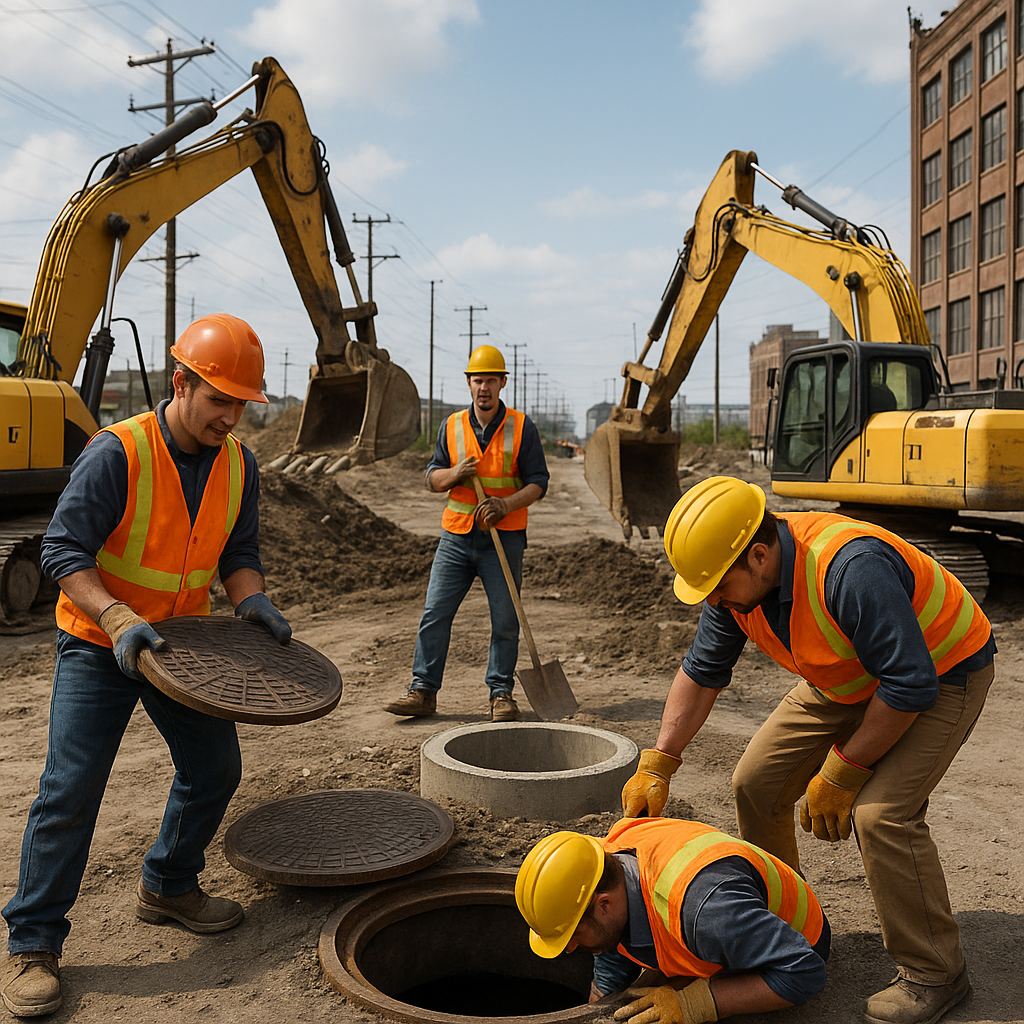Advanced Sewer Inspection Techniques for Problem Solving
Discover cutting-edge sewer inspection solutions using AI, robotics, and GIS for precise problem-solving and compliance.

Advanced Sewer Inspection Techniques for Problem Solving
Introduction
In the rapidly evolving sewer inspection industry, the integration of advanced technologies like AI, robotics, and GIS has transformed traditional methods, enhancing accuracy and efficiency. This article explores how these innovations contribute to effective sewer inspection problem-solving, offering valuable insights for professionals seeking to optimize their operations.
Innovations in Sewer Inspection Technology
Robotic and AI-Driven Systems
The adoption of robotic cameras and AI-driven systems is revolutionizing sewer inspections. These technologies automate defect detection, leveraging multi-sensor platforms that combine cameras, LiDAR, and sonar. This integration creates detailed 3D models of sewer interiors, enabling precise identification of blockages, leaks, and structural damage.
- AI-Powered Analysis: Automatically classifies defects, reducing human error and accelerating analysis.
- 3D Modeling: Provides comprehensive visualizations, aiding in precise problem identification.
High-Definition and 360-Degree Cameras
Modern inspections utilize high-definition, panoramic, and 360-degree cameras for clearer views of pipe conditions. These systems surpass traditional CCTV in providing real-time video feeds and accurate geolocation of issues.
- Self-Leveling Technology: Ensures stable imaging, allowing for immediate diagnosis.
- Panoramic Views: Offers comprehensive coverage of pipe interiors.
Integration with GIS and Smart City Platforms
Inspection data is increasingly integrated with Geographic Information Systems (GIS) and smart city infrastructure. This integration enhances asset management, predictive maintenance, and long-term planning.
- Predictive Maintenance: Uses data analytics to forecast potential failures.
- Asset Management: Facilitates efficient resource allocation and infrastructure planning.
Industry Regulations and Compliance
Stricter Environmental Compliance
Regulatory bodies emphasize rapid detection of leaks and illegal discharges to prevent environmental contamination. Digital tools assist in compliance with EPA and local standards.
- Automated Reporting: Ensures thorough records for audits and regulatory reviews.
- Training and Certification: Focus on equipping personnel to operate advanced equipment and interpret AI-generated reports.
Market Trends and Opportunities
Market Growth
The global sewer inspection systems market is poised for significant growth, driven by technological innovation and smart city initiatives.
- Smart City Integration: Presents opportunities for companies offering advanced solutions.
- Challenges for Smaller Operators: High initial costs and complexity may limit adoption, highlighting a niche for cost-effective solutions.
Safety Protocols and Best Practices
- Reduced Physical Entry: Robotic inspections minimize the need for workers to enter hazardous environments.
- Real-Time Hazard Detection: Portable gas detectors and live video feeds enhance safety.
Recent Success Stories
AI-Powered Defect Recognition
Research shows that multi-sensor robotic systems with tailored AI models achieve higher accuracy in damage detection.
3D Mapping for Precision Repairs
Systems like Elios 3 enable instantaneous 3D representations of sewer lines, improving fault localization and reducing unnecessary excavation.
Cost and Pricing Considerations
- Professional vs. DIY: Professional inspections are more comprehensive but come at a higher cost.
- Technology Impact on Costs: Although advanced equipment requires significant investment, it reduces long-term costs by enabling targeted repairs and minimizing excavation.
Conclusion
The sewer inspection industry in 2024 is marked by rapid technological advancement. AI, robotics, and advanced imaging lead to safer, more accurate, and cost-effective inspections. Regulatory pressures and smart city initiatives are driving market growth, despite challenges for some operators. Safety remains paramount, and success stories underscore the effectiveness of AI and 3D mapping in solving complex sewer problems.
Practical Tips for Sewer Inspection Professionals
- Invest in Training: Ensure your team is equipped to handle advanced technologies.
- Leverage AI and Robotics: Utilize these tools to enhance inspection accuracy and efficiency.
- Integrate with GIS: Improve asset management through advanced data integration.